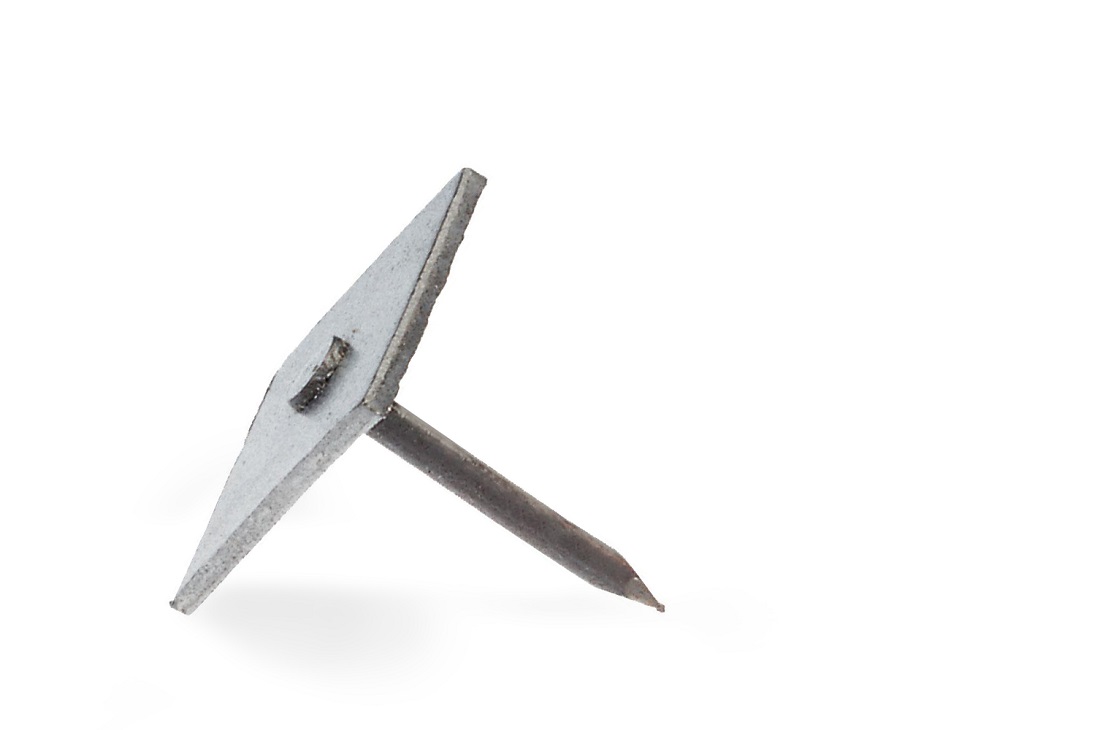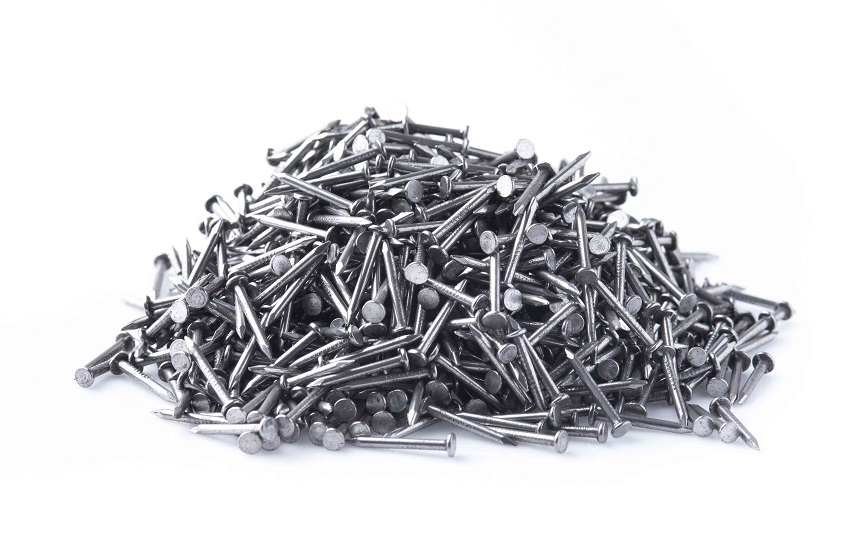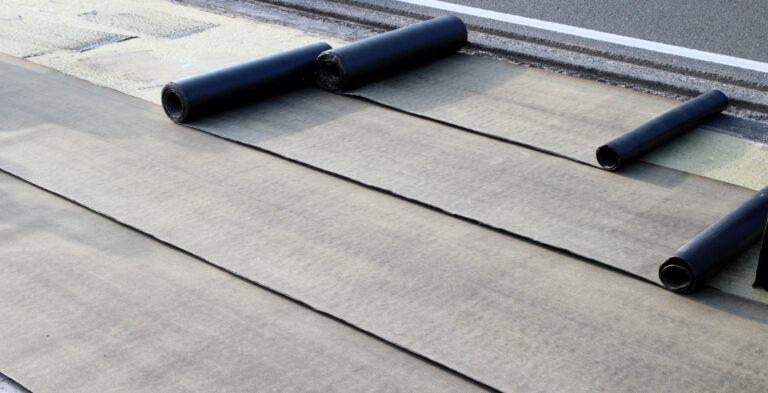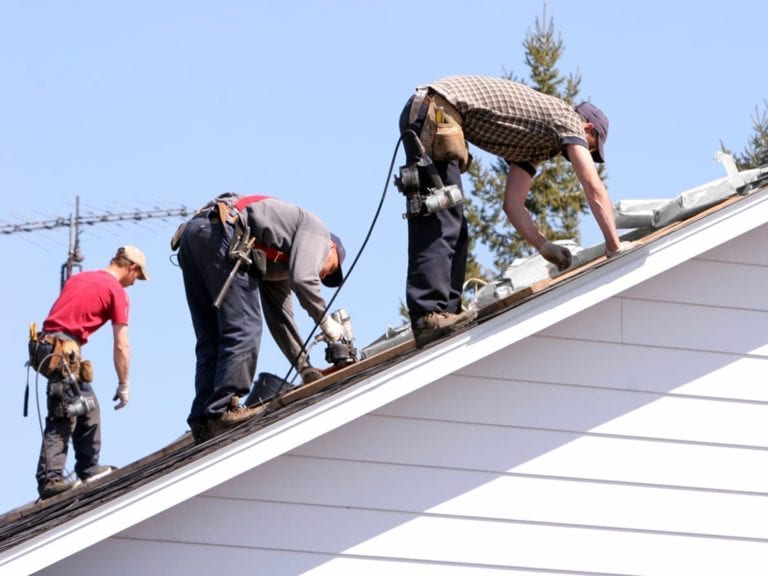A Guide to the Types of Roofing Nails
Roofing nails are cleverly designed to help you do a better job. Though they vary greatly in material, size and type, all roofing nails share one helpful characteristic: a diamond-shaped point. This point is expertly designed to keep the decking intact when it punctures through.
We’ll walk you through the types, sizes and materials you may choose from when picking a roofing nail. Ultimately, it is best to refer to your building codes and roofing manufacturer for more specific guidance. In your building codes and international building codes, nails may be referenced as “fasteners” along with staples and screws.
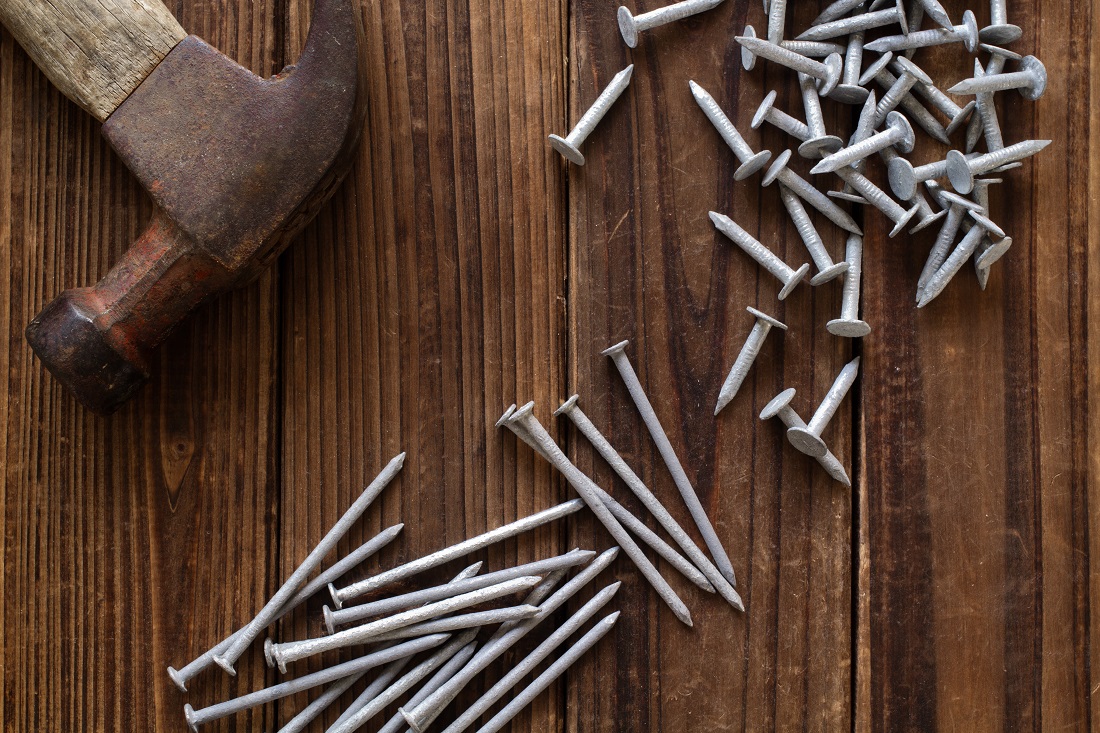
With that said, let’s explore your roofing nail options and which is best for your next roof.
Three Basic Types of Roofing Nails
There are three basic types of roofing nails for shingles:
1. Smooth Shank
The shank of the nail is the part of the nail that punctures through the material you are nailing. They are the most basic type of roofing nail and cheaper than the other two options. Smooth shank nails have a smooth shank compared to the ring shank, which is not smooth.
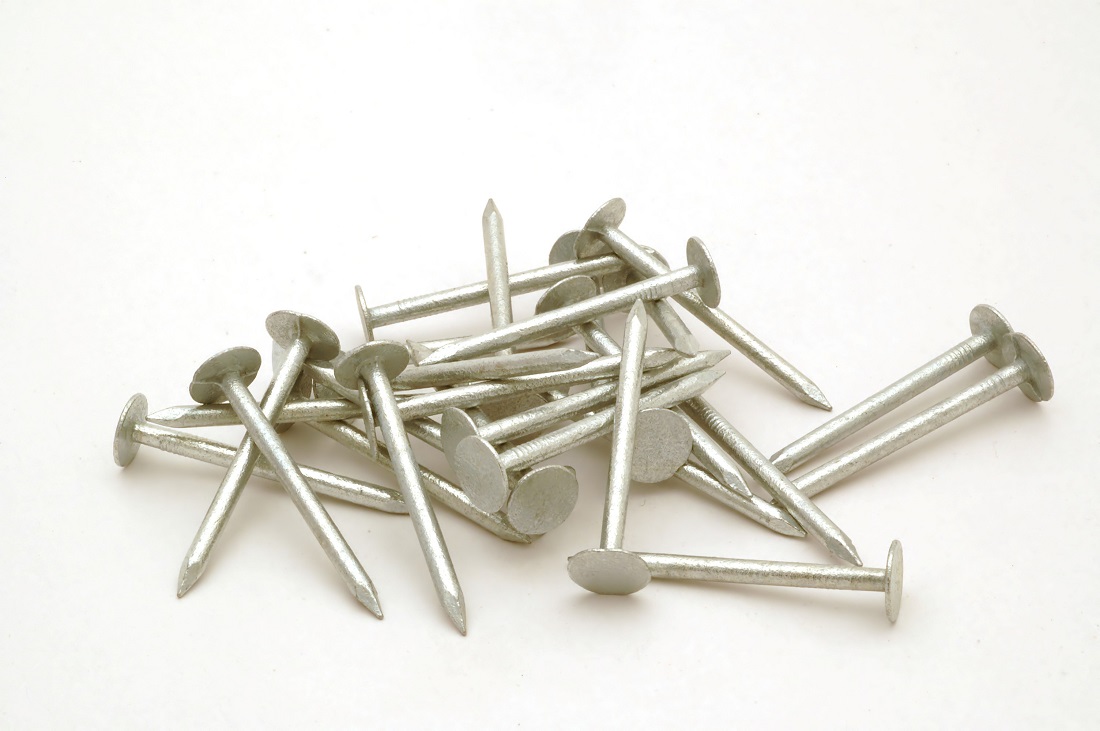
2. Ring Shank
A ring shank nail, also called an annular roofing nail or corrugated roofing nail, has rings along the shank. They aren’t connected, as they are with screws. Still, these rings give the nail extra staying power, or grip, in the shingles and sheathing.
The head diameter is typically a standard 3/8-inch for all roofing nails. A larger-sized head might increase the risk of exposing part of the nail head in standard nailing locations on the shingle.
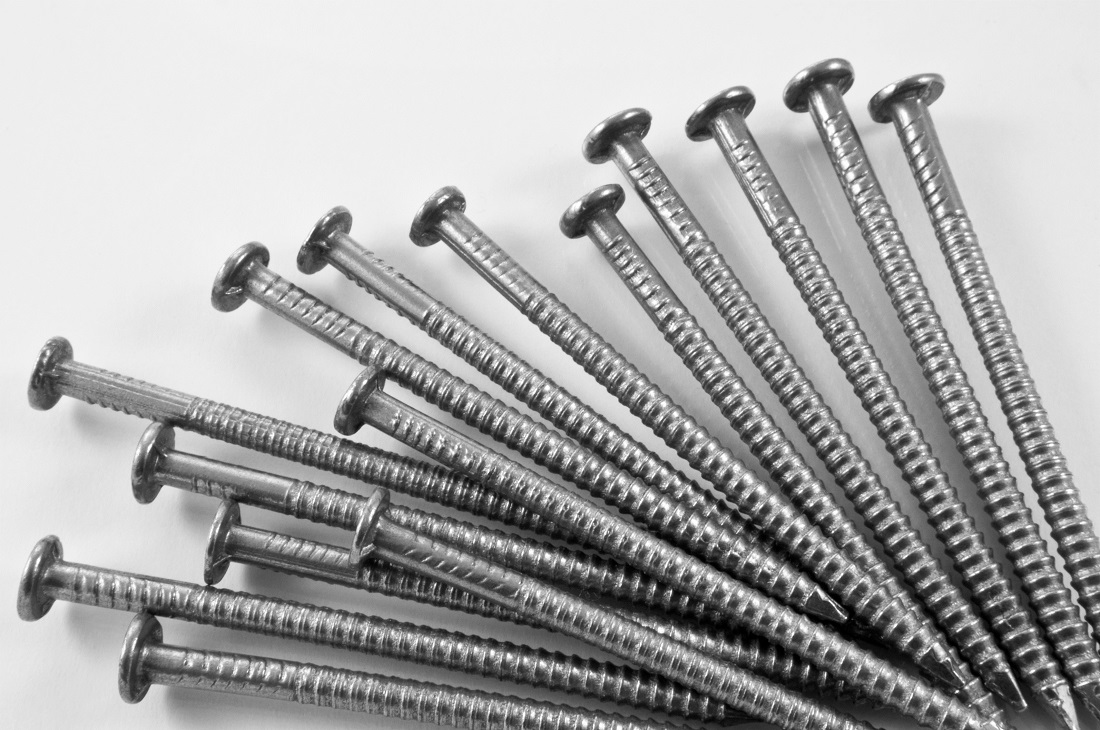
One IKO test found that ring shank nails have 300 percent more strength than smooth shank nails. When deciding whether to use smooth shank vs ring shank nails, ring shank is best where performance, especially wind resistance, is a priority.
3. Square Cap
Square cap nails are typically used for fastening felt underlayment and not asphalt shingles. They have a square-shaped head instead of the more typical circular head you see on other nails. Square cap nails may have a smooth or coiled shank.
Roofing Nail Materials
You can find each of the three types of roofing nails in the three materials we list below. Whichever material you choose for your nails, remember that roofing nails are on the exterior of homes and therefore the outer surface needs to be corrosion-resistant. In fact, in some coastal regions, the building codes require the entire nail to be corrosion-resistant, not just the outer surface.
1. Steel
Steel makes for strong nails. Of course, as your nails will be on the exterior of a home, they must have rust and corrosion protection. For steel, this means stainless steel or galvanized steel. Stainless steel nails are best used for slate and ceramic roofs or asphalt shingle roofs in coastal climates.
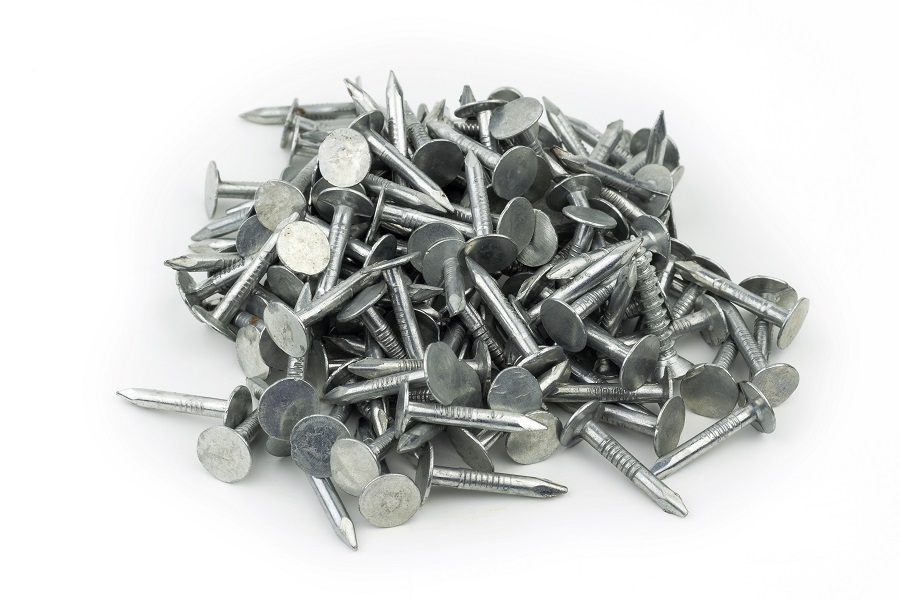
For asphalt shingles, use galvanized roofing nails. Galvanization adds a layer of zinc onto the steel that significantly inhibits rust and corrosion. There are two methods of galvanizing nails: hot-dipped and electro-galvanized. The hot-dipped method results in a thicker layer of zinc that lasts longer, so they are preferred.
2. Copper
Copper is strong and naturally resists rust and corrosion. You may prefer to use copper roofing nails on a roof with other copper accents. Copper nails are most often used on roofs with copper flashing and accessories. However, as roofing nails will usually be hidden by the shingles above them, steel nails don’t detract from the look of the roof.
3. Aluminum
Aluminum is a weaker metal than steel and copper. However, aluminum nails are still used on asphalt shingle roofing by some roofers. Aluminum nails are more prone to corrosion, as well as chemical and salt damage, than steel nails.
Length of Roofing Nails
Roofing nails are available in lengths ranging from one to two inches. Roofers seek to use just the right length of nail so that the decking (or OSB) is completely punctured by the nail. The puncture must be complete so that the whole diamond tip is past the wood.
Therefore, you have to plan out your sheathing thickness, shingle thickness and nail length carefully. If you’re using typical architectural shingles and 3/8-inch-thick sheathing, you’ll need 1-inch nails. If your building codes require thicker sheathing, you’ll need 1 ¼-inch nails.
When installing thicker shingles, you may need to use a longer nail in order to penetrate the OSB beneath fully. Also, when installing ridge and hip shingles, you’ll need nails that are about a half-inch longer, as they need to penetrate more shingle layers.
You may find roofing nails identified by their penny length. The penny system is an old way of classifying nails. It is represented by the letter “d.” This roofing nail size chart compares the size of roofing nails in inches vs penny length.
Roofing Nail Sizes Chart
| Nail Length in Inches | Nail Length in Penny Inches |
|---|---|
| 1 | 2d |
| 1 ¼ | 3d |
| 1 ½ | 4d |
| 1 ¾ | 5d |
| 2 | 6d |
Roofing Nail Gauge
Roof nails are available in 12-, 11- and 10-gauge. The lower the gauge number, the thicker the nail. Under most building codes in North America, 12-gauge is the minimum thickness of nail allowed on a roof. Roofing nails that are 11- or 10-gauge are also allowed by most building codes as they are thicker and sturdier. However, you may find they are more expensive.
Can I Use Screws for Roofing Shingles?
You cannot use screws for roofing shingles, only roofing nails are approved fasteners. Screws leave small gaps in the material they are driven into, and this may be enough to allow for a leak. If you were considering using screws for their extra security, consider ring shank nails instead.
What Type of Nails Should be Used with Shingles?
For best performance, you should use ring roofing nails that are made of hot-dipped galvanized steel. You should use 12-gauge or thicker. The length of nail you use depends on the thickness of the sheathing and shingles you use.
How Many Nails per Square of Roofing?
Estimating your roofing materials is key to your success, so you’ll want to know how many nails you’ll use in a square. That depends on the exposure and coverage of your shingles. With higher coverage, you’ll lay down fewer shingles in a square and therefore use fewer nails. For example, when using Cambridge™ shingles, you’ll use roughly 240 nails because of their Advantage size. If you’re installing by the High Wind Application, you’ll use two more nails a shingle, so 360 nails per square.
The Cost of Roofing Nails
The cost of your roofing nails will depend on a few factors, including material, type and length. Also note that nails are sold by the pound, and if you’re a professional roofer, it may benefit you to buy in bulk in order to reduce costs.
That being said, you can expect a small, 5-pound box of smooth shank galvanized steel roofing nails to cost around $10. Nails for roofing felt are also more expensive than typical nails.
If you’re estimating the cost of your roofing nails, it’s best to head to your supplier and compare their prices yourself, as costs vary by location too.

What Type of Nails for Felt/Underlayment?
Roofing felt is a type of underlayment that professionals install beneath a roof’s shingles. Unlike self‐adhering underlayments, such as ice and water protector, felt underlayment needs to be fastened in place with nails. Specifically, you’ll need roofing cap nails. These have large plastic caps for heads, which help prevent water intrusion.
Don’t confuse these cap nails with gasket roofing nails. Roofing nails with gaskets are intended for metal roofs. The gasket is rubber, not plastic. You want roofing nails with plastic washers for roof underlayment.
What Type of Nails for Roof Flashing?
Roofers tend to use the roofing nails they already have on hand to install flashing. You don’t need to use cap nails or another special type of nail for this purpose.
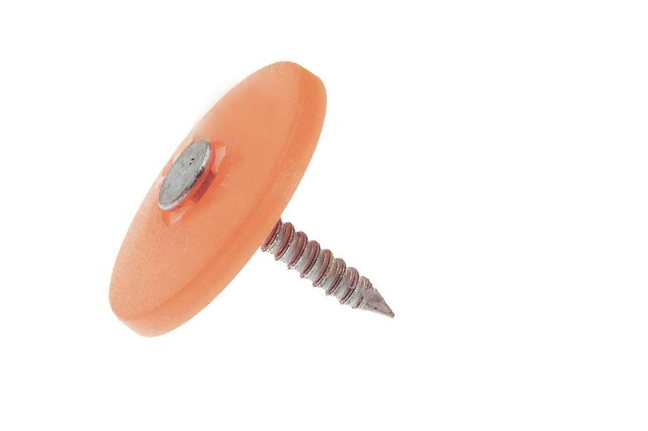
What Type of Nails for Roof Sheathing?
Common nails, or even wood screws, may be acceptable nails for OSB roof sheathing. If you need to install new roof decking or OSB, you’ll need to nail it to the roof truss. There are fewer requirements for these nails than those used to secure shingles. You should check with your building code and local bylaws to confirm.
How to Fix Nail Pops in a Roof
Nails can pop above the roof surface for a number of reasons, such as being underdriven, not fully penetrating the sheathing or if a roof’s decking has warped or bent.
Once you have inspected the shingle to assess the damage, fixing the nail pop is simple. Remove the shingle, pull the nail, apply sealant and replace the shingle. Be sure to use the correct nail length and place it properly.
Do not hammer the nail down, renail it in the same spot, or use the same shingle. All of these methods could allow water through the roof. For example, if you remove the nail and drive it back into the same spot, your aim won’t be perfectly accurate. There will be a tiny gap on one side of the nail or the other. Even if it is imperceptible to you, water will find it.
If you use the same shingle and add the nail back in a different spot, you’re leaving behind a hole where the nail once was. Some suggest you fill this hole with roofing cement, but this repair option must be done carefully to maintain the roof’s water-shedding performance.
Can You Reuse Roofing Nails?
If you take off a shingle for repairs or take off the whole roof in preparation for a reroofing job, you’ll have a ton of roofing nails on hand. You may be tempted to reuse these to save on costs. That’s a bad idea. Not only is it tedious to yank these nails out, but their zinc coating will also be worn. Plus, they may have been otherwise damaged. It’s not wise to attempt to reuse them, as they may cause problems on the new roof.
The Importance of Nails in Roofing
Every time there is a gust of wind, we rely on the nails we’ve chosen to hold new shingles in place. Choosing the right roofing nails and driving them properly is essential for getting the best performance out of your roof. For more tips on roof installation and tools, read our article about choosing between a nail gun and a roofing hammer.

